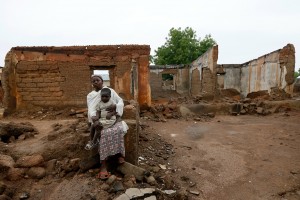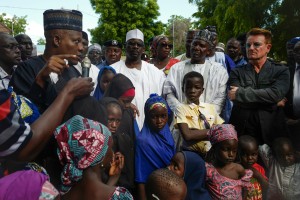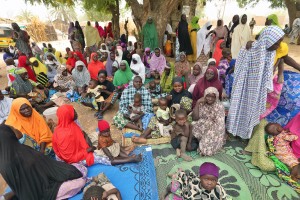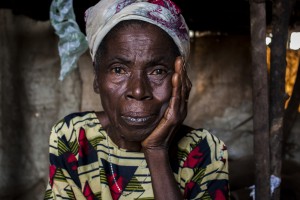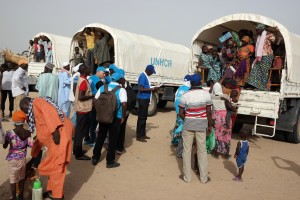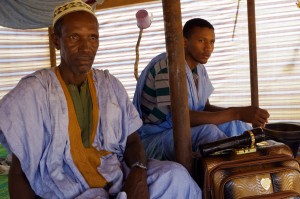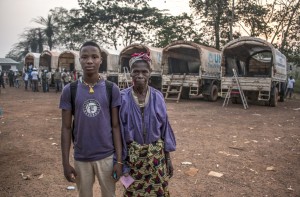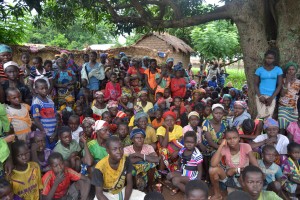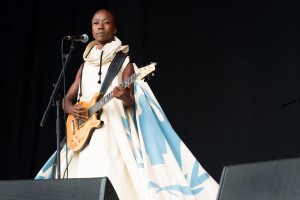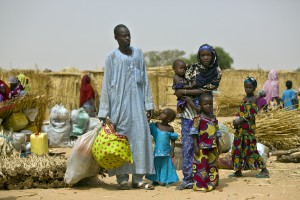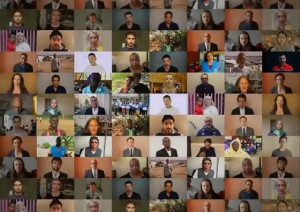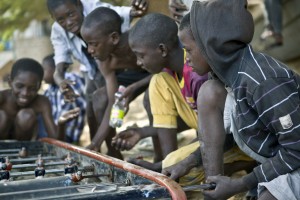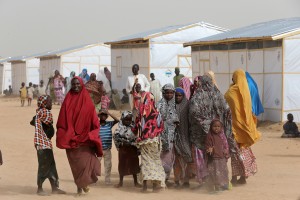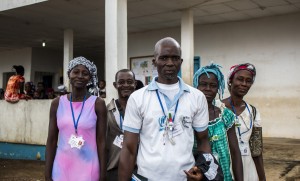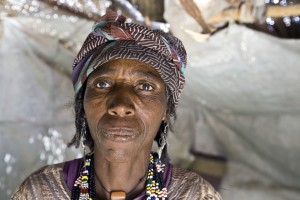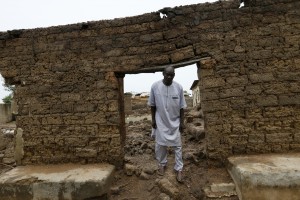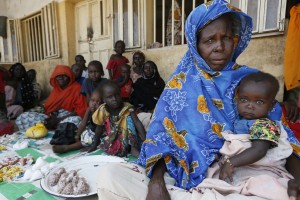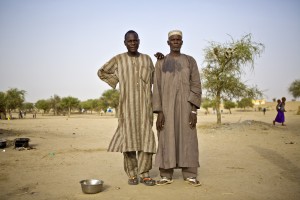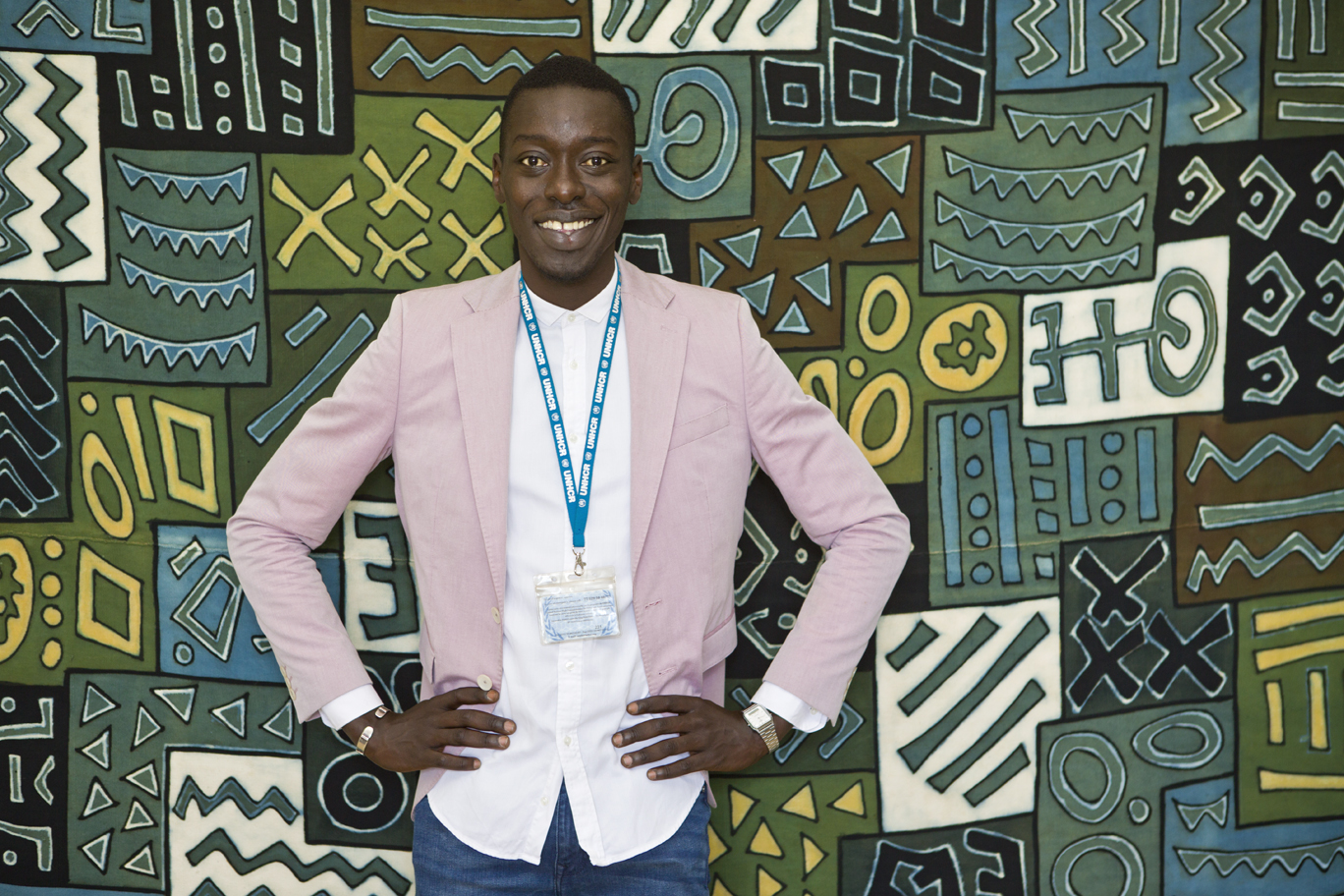REFUGEE exhibition opens in the US, featuring work of Senegalese photographer Omar Victor Diop
“We cannot be in our comfort zone and forget about what is going on next door”
The striking photo exhibition “REFUGEE” opens tomorrow (Saturday) at the Annenberg Space for Photography* in Los Angeles. The work of five internationally acclaimed photographers** will be on display until 21 August, portraying the courage, resilience and strength of displaced people living in various countries. UNHCR provided logistical support to photographers and collaborated with the Annenberg Foundation on the exhibit. Senegalese photographer Omar Victor Diop, 35, went to eastern Cameroon to photograph and talk with refugees from the Central African Republic (CAR). UNHCR Hélène Caux met with him upon his return to Dakar, and he shared with her how much he learned from the refugees’ resilience and strength.
You used to work in finance in Dakar, then you turned to photography. You have been photographing models, artists in studios. Your latest project is about refugees. Could you tell us more about it?
My latest project, which I named “Hopeful Blues,” is a series of refugee portraits shot in the UNHCR refugee camps of Mbile and Lolo in eastern Cameroon. The camps host, respectively, 11,500 and 12,200 refugees from the Central African Republic***. “Hopeful Blues” is part of the wider “REFUGEE” project commissioned by the Annenberg Space for Photography. It is the first time I photograph people who are outside of the art world, and it was a great experience for me. I think the main reason why I accepted to join this adventure was that I have always been committed to using photography to show what it is to be African, both in Africa and outside of Africa. You can’t do it by just doing photography in the art world and the beautiful world, the glamourous world. You also have to give a picture of the less ideal situations, such as that of the refugees. These people have fled atrocious violence in their country, the Central African Republic, they have lost everything.
What was your approach for photographing these refugees from CAR?
It was quite unusual because I always take a lot of time to prepare everything for portraits. It usually takes me a week for a single image, but it was different here because we only had a couple of days to shoot something like 25 portraits and we could not sleep in the camp for security reasons and all the security protocols of UNHCR. Basically, I had to streamline the whole process and make it effective, it was really project management per say! I ended up shooting against a white background and I just focused on my interaction with the refugees because I was also recording sound to be able to write detailed captions later, so I could not be bothered with creating background for every single image on site. I have always considered that the creative process just starts with the action of taking an image. I continued to work on the whole background after I got back to Dakar, at post production level.
What did you learn about and from the refugees?
I photographed Mbororo refugees who are from the Fulani group, who we refer to here in Senegal as Peuls. In many instances, I would look at them, I would hear their voices and the language they speak and had the feeling I was talking to people from Senegal. I could really relate to them, and I could really realise that no one is actually 100% safe from ending up in a refugee situation. It is not a Central African problem, it is a human problem. If you think about Syria only ten years ago, all the Syrian refugees had no idea that they would be running across borders to find a safe haven, so no one is safe from it. And we cannot be in our comfort zone and forget about what is going on next door because it can affect us.
What touched or impressed you the most from your experience with the refugees?
Fulani people have very beautiful features. From an artistic point of view, they are one of the most beautiful people in Africa. Also the level of maturity that I could sense, especially in the women’s gazes … Every time I would ask someone how old she was, she would say “I am 21”, but I swear, the look I would get would be the one of an old soul. Because probably of what they went through, and all the things that they overcame, thanks to the help of the volunteers, the UNHCR. But still they went through a lot. And when they talked about what led them to be a refugee in a camp, they talk about it with so much grace and so much strength… You know, it is not a complaint, it is a story that they tell you, it is a story that they share with you and this really touched me. I hope it shows in the photos, how dignified they were.
What messages are you trying to convey through your photographs?
I try to show how diverse the situations and destinies are on this continent. Sadly, when people refer to Africa, what comes to one’s mind is the zebras and the trees and the spectacular outdoors! Or the misery, the starvation, the wars …. But the world tends to forget that we are one billion people on this continent with very different fates, yet also with something that is very strong and that we all share: it is resilience. We, Africans, are hopeful people, and we always look ahead, be it the refugees or young artists in Dakar, or a 70-year-old woman in South Africa. This experience among the refugees just confirms to me that we have so much in common as Africans that we can share. I am really grateful I had this opportunity to be in these camps.
Do you want to focus more on refugees in your work in the future?
I absolutely want to have another experience with refugees. Maybe in some years, I’d like to see what these boys and girls – some of whom were born in the camps –have become. Will they have been able to go back to the Central African Republic? Will they be able to go to school, as their parents all wish? I would really want to follow up with them, even if it is not a photography series, but I think from a personal point of view, I need to have another contact with these persons who were nice enough to spend time with me and meet me in my improvised studio in the refugees camps.
What advice would you give to a young refugee who wants to become a photographer?
If I meet a refugee who wants to become a photographer, the first advice I would give is: don’t drop out of school. You will need it. I have seen opportunities for education in the camps I visited with the schools. Your school will give you an opportunity to be a better photographer. That is what I would tell young refugees.
* For more on the REFUGEE exhibition at the Annenberg Space for Photography: http://kora.unhcr.org/photo-exhibition-internationally-acclaimed-artists-shows-refugees-new-light/
https://www.annenbergphotospace.org
** Lynsey Addario (USA), Omar Victor Diop (Senegal), Graciela Iturbide (Mexico), Martin Schoeller (Germany) and Tom Stoddart (UK).
*** Cameroon hosts in total 274,000 refugees from the Central African Republic.
Together with photographers Lynsey Addario and Martin Schoeller, Omar Victor Diop will be part of Crisis in Focus at the Annenberg Space for Photography on 22 April, at 7:45 pm Dakar time. During this discussion, he will share the stories behind his moving images. UN Deputy High Commissioner for Refugees Kelly Clements will open the discussion with a brief overview of the worldwide refugee crisis, and NPR’s Eleanor Beardsley will moderate the panel. The event will be live streamed free-of-charge
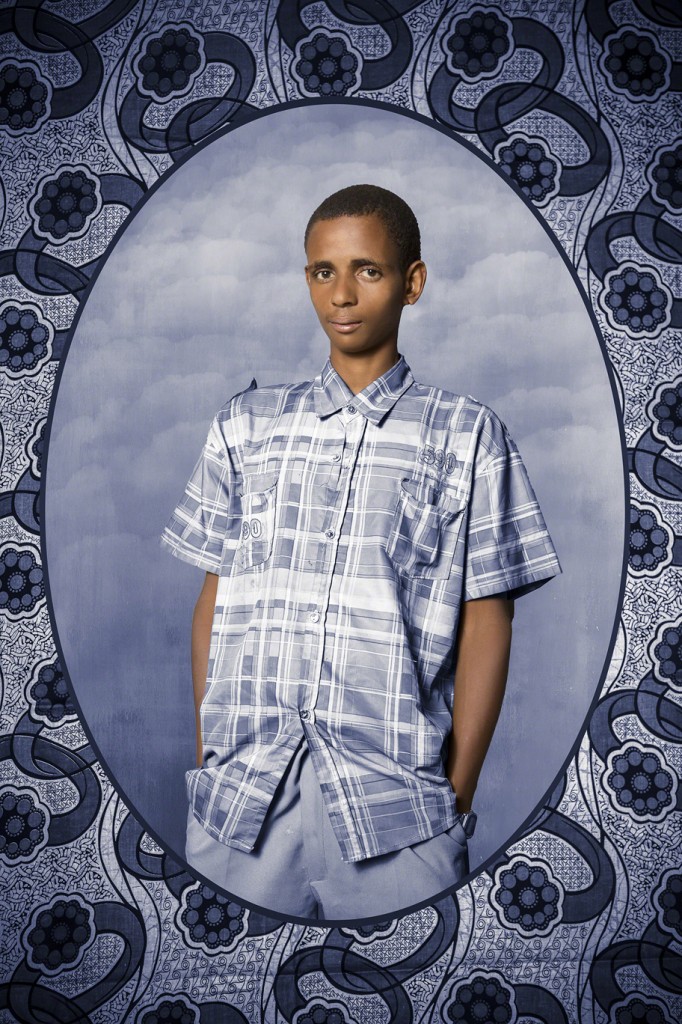
In his home village in the Central African Republic, Seini was a cow herder. He loved that life, he said. But in Cameroon, where he is now a refugee, he had to learn another occupation until he could return to his cows. Photo: OMAR VICTOR DIOP

Dida’s journey from her village in the Central African Republic to Mbile refugee site in Cameroon was arduous. Her 13 sons and daughters helped carrying the old woman across two rivers. “I will always be grateful that they were so protective of me” she says. Photo: OMAR VICTOR DIOP
About Senegalese photographer Omar Viktor Diop
http://www.omarviktor.com
About UNHCR
UNHCR, the UN Refugee Agency, works worldwide to protect, assist and find solutions for refugees, internally displaced people and stateless populations. It has some 9,700 staff across 126 countries, many of them working in humanitarian emergencies and in close proximity to regions of conflict.
www.unhcr.org
About the Annenberg Space for Photography
The Annenberg Space for Photography’s intimate environment features state-of-the-art, high-definition digital technology as well as traditional prints by both world-renowned and emerging photographers. The Photography Space conveys a range of human experiences and serves as an expression of the philanthropic work of the Annenberg Foundation and its directors.
ThePhotoSpace.org/refugee
About the Annenberg Foundation
The Annenberg Foundation is a family foundation that provides funding and support to nonprofit organizations in the US and globally. Since 1989, it has funded programmes in education and youth development; arts, culture and humanities; civic and community life; health and human services; and animal services and the environment. In addition, the Foundation and its Directors are directly involved in the community with innovative projects, including the Annenberg Space for Photography, that further its mission of advancing a better tomorrow through visionary leadership today.
Press photos (free to use if exhibition is announced) can be downloaded here:
http://media.unhcr.org/Package/2CZ7A2QCSP4
Media contacts:
UNHCR: Roland Schönbauer in Geneva: +43 699 1459 7006, schoenb@unhcr.org
Helene Caux in Dakar: + 221 77 333 1291, caux@unhcr.org
Annenberg Foundation: Camille Lowry in Los Angeles, +1 310 209 4568, clowry@annenberg.org
